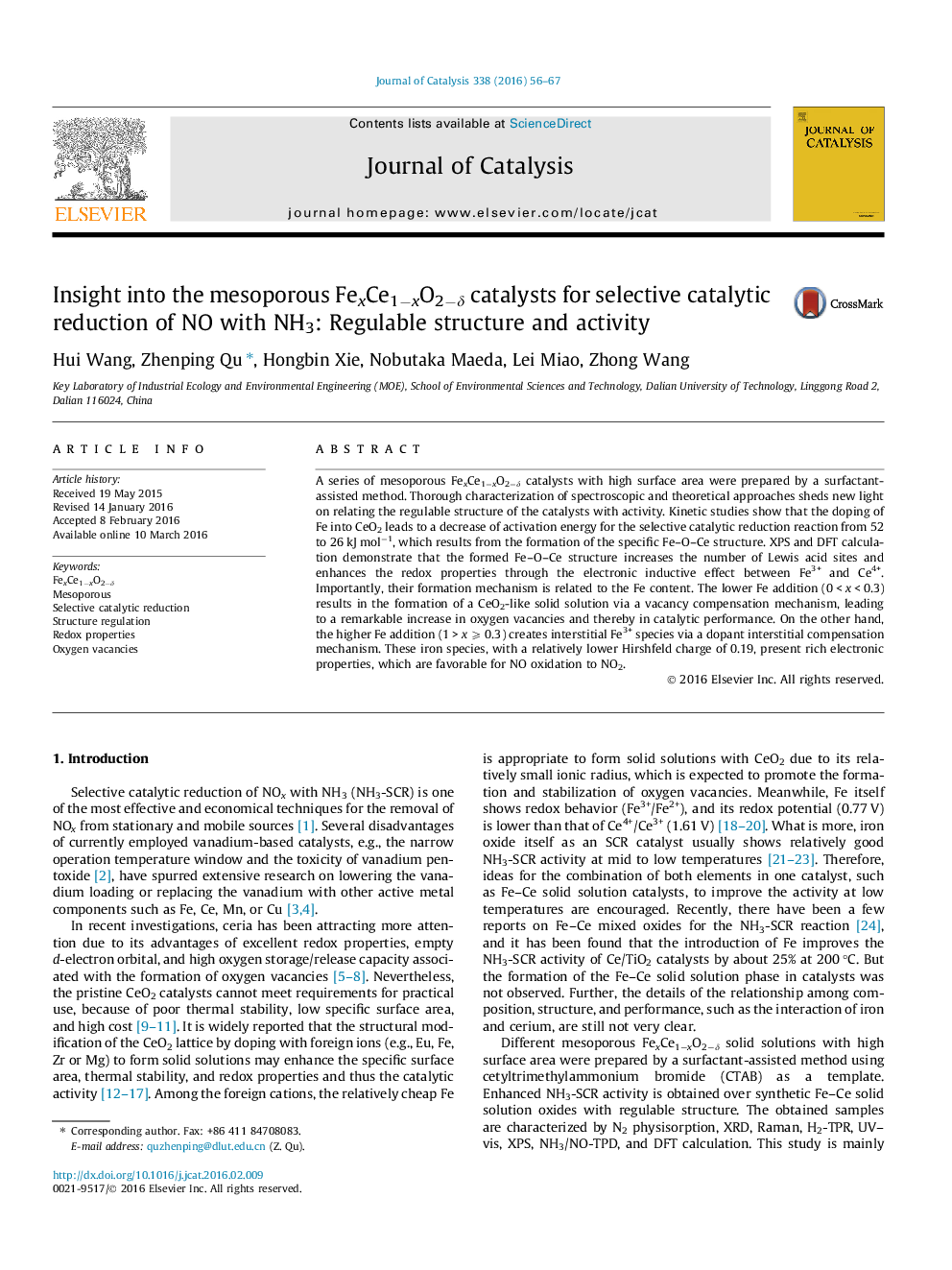| کد مقاله | کد نشریه | سال انتشار | مقاله انگلیسی | نسخه تمام متن |
|---|---|---|---|---|
| 60618 | 47540 | 2016 | 12 صفحه PDF | دانلود رایگان |

• Mesoporous FexCe1−xO2−δ samples with high surface area were synthesized successfully.
• The formation of a specific Fe–O–Ce structure favors the NH3-SCR reaction.
• Different structural features are tailored through different compensation mechanisms.
• Oxygen vacancies are a stimulative factor for FexCe1−xO2−δ catalysts (x < 0.3).
• Interstitial Fe3+ is conducive to SCR activity for FexCe1−xO2−δ samples (x ⩾ 0.3).
A series of mesoporous FexCe1−xO2−δ catalysts with high surface area were prepared by a surfactant-assisted method. Thorough characterization of spectroscopic and theoretical approaches sheds new light on relating the regulable structure of the catalysts with activity. Kinetic studies show that the doping of Fe into CeO2 leads to a decrease of activation energy for the selective catalytic reduction reaction from 52 to 26 kJ mol−1, which results from the formation of the specific Fe–O–Ce structure. XPS and DFT calculation demonstrate that the formed Fe–O–Ce structure increases the number of Lewis acid sites and enhances the redox properties through the electronic inductive effect between Fe3+ and Ce4+. Importantly, their formation mechanism is related to the Fe content. The lower Fe addition (0 < x < 0.3) results in the formation of a CeO2-like solid solution via a vacancy compensation mechanism, leading to a remarkable increase in oxygen vacancies and thereby in catalytic performance. On the other hand, the higher Fe addition (1 > x ⩾ 0.3) creates interstitial Fe3+ species via a dopant interstitial compensation mechanism. These iron species, with a relatively lower Hirshfeld charge of 0.19, present rich electronic properties, which are favorable for NO oxidation to NO2.
Figure optionsDownload high-quality image (230 K)Download as PowerPoint slide
Journal: Journal of Catalysis - Volume 338, June 2016, Pages 56–67